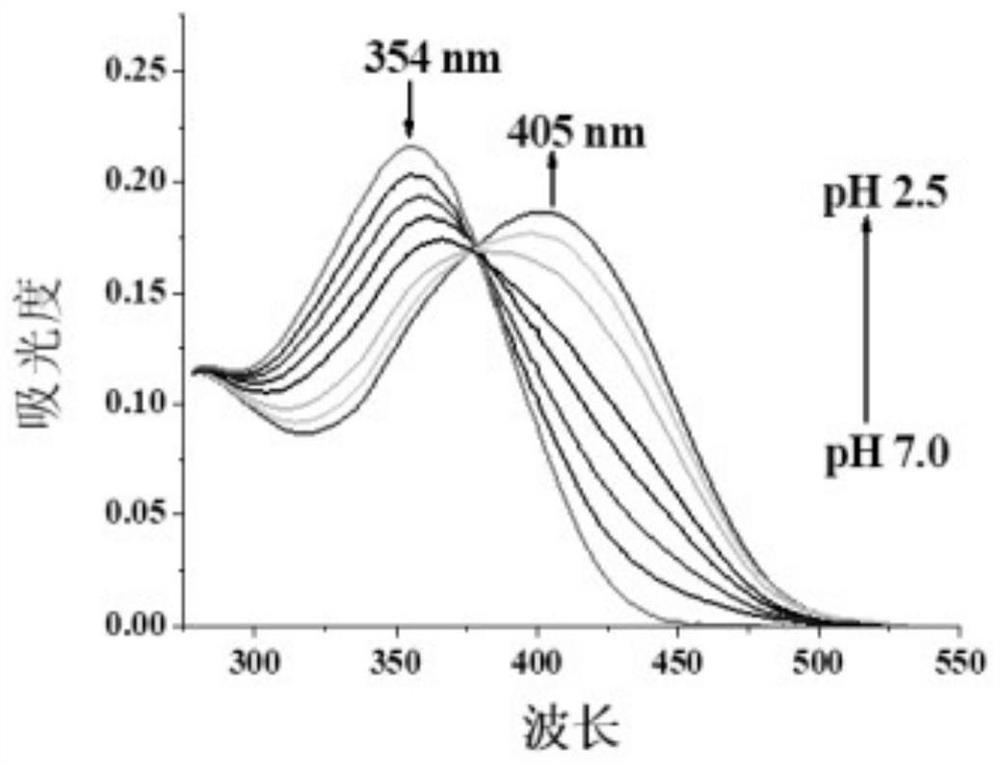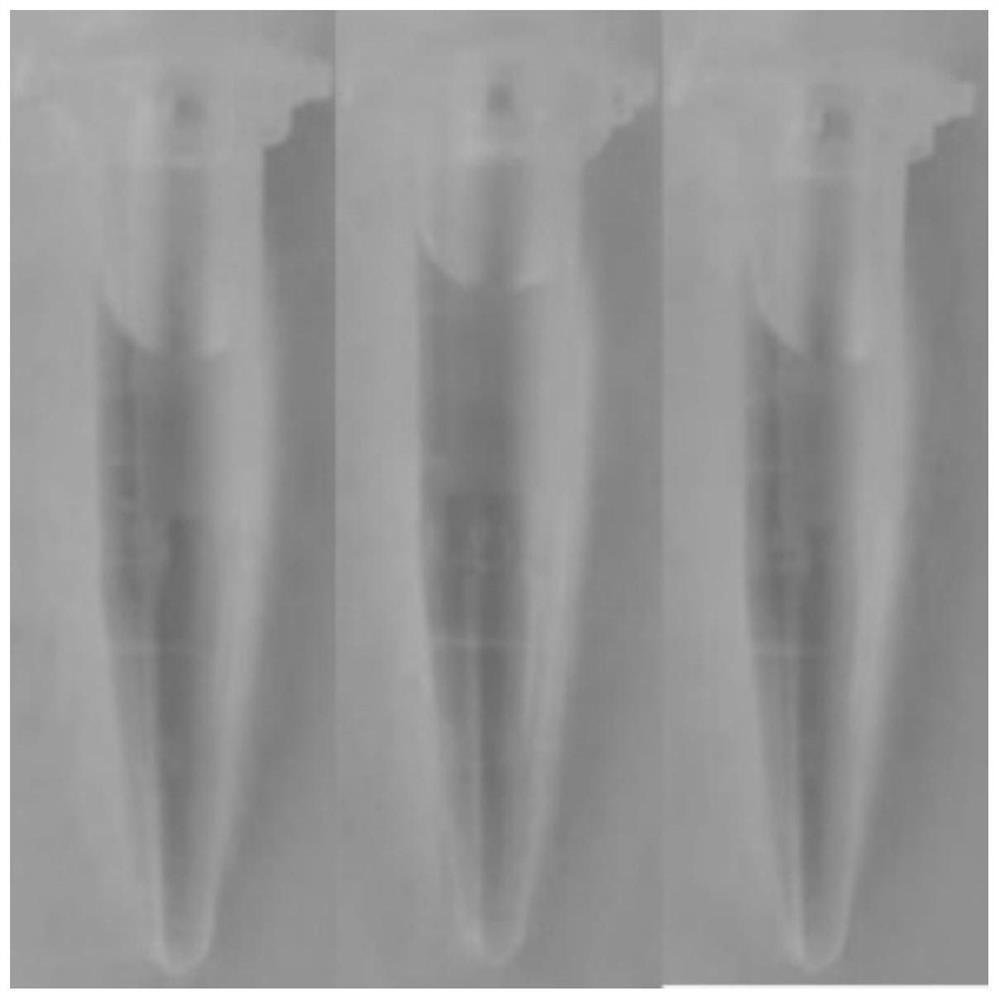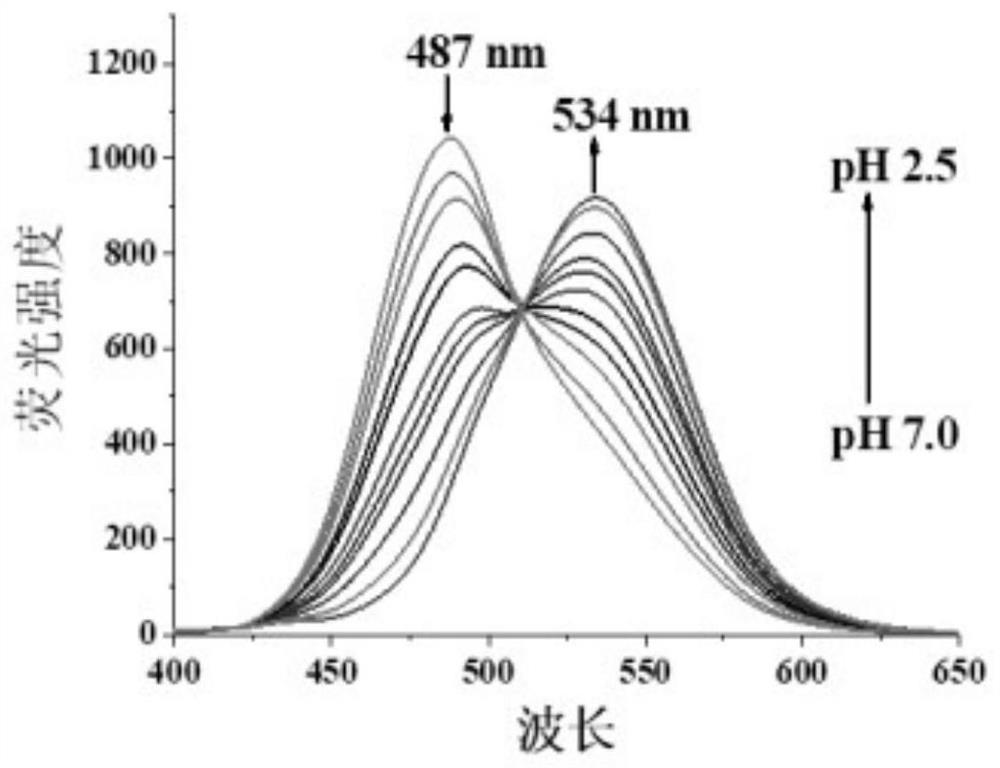Multifunctional lysosome pH probe based on benzimidazole and preparation method and application thereof
A technology of methyl benzimidazole and benzimidazole, which is applied in the field of fluorescent probes, can solve the problems of rarity and lack of pH fluorescent probes, and achieves good reversibility, good biocompatibility, good H+ selectivity and photostability sexual effect
- Summary
- Abstract
- Description
- Claims
- Application Information
AI Technical Summary
Problems solved by technology
Method used
Image
Examples
Embodiment 1
[0032] (1) Add 0.53g (3.6mmol) of p-dimethylaminobenzaldehyde and 0.40g (3.0mmol) of 2-methylbenzimidazole into a thick-walled pressure bottle with a small amount of N,N-dimethylformamide Dissolve completely, then add 2 mL of trimethylchlorosilane dropwise, stir in an oil bath at 110°C, seal and reflux for 24 hours.
[0033] (2) After the reaction is finished, cool to room temperature, add saturated aqueous sodium carbonate solution to the solution, adjust the pH to 10, and continue stirring for 30 min. The reaction product was extracted with dichloromethane, the organic phase was washed three times with a saturated sodium chloride aqueous solution, and then anhydrous sodium sulfate was added to the organic phase to remove water. The solvent was distilled off under reduced pressure to obtain a crude product.
[0034] (3) Purify the crude product by silica gel column chromatography, the eluent is petroleum ether:ethyl acetate=3:1, after the elution is completed, the solvent is...
Embodiment 2
[0036] The probe in Example 1 was dissolved in DMSO to prepare a stock solution, and the stock solution was diluted to 10 μM with ultrapure water when performing spectral measurement. The measurement is carried out with a quartz cuvette with an optical path of 1 cm, and the pH of the solution is slightly changed by adding a very small amount of 0.1 mol / L hydrochloric acid or sodium hydroxide, and the absorption spectra of the probes are measured in different pH environments. Such as figure 1 , Titration changes the pH of the solution from 7.0 to 2.5, the absorption intensity at 354nm is gradually decreasing, while the absorption intensity at 405nm is gradually increasing. These absorption peaks form an isosbestic point at 378 nm. figure 2 It is the solution image at pH 7.0, 4.5, 2.5, the color changes from light yellow to colorless.
Embodiment 3
[0038] Dilute the probe stock solution in Example 2 to 10 μM with ultrapure water, and use 0.1mol / L hydrochloric acid or sodium hydroxide titration and measure the fluorescence emission spectrum ( image 3). With the gradual increase of hydrogen ions in the solution, the fluorescence signal at the wavelength of 487nm is continuously weakened, and the intensity of the wavelength of 534nm is continuously enhanced. These fluorescence curves also intersect at one point, and the wavelength is 510nm. Figure 4 It is the image of the solution under the ultraviolet light at pH 7.0, 4.5 and 2.5, and the colors are blue, cyan and green. According to the fluorescence spectrum data, the fluorescence ratio and pH value at 487nm and 534nm place are carried out curve fitting ( Figure 5 ), the pKa value of the probe is considered to be 4.74. Among them, the fluorescence ratio has a good linear relationship with pH in the range of 4.06-5.20 ( Figure 6 ), the linear equation is: fluorescen...
PUM
| Property | Measurement | Unit |
|---|---|---|
| wavelength | aaaaa | aaaaa |
Abstract
Description
Claims
Application Information
 Login to View More
Login to View More - R&D
- Intellectual Property
- Life Sciences
- Materials
- Tech Scout
- Unparalleled Data Quality
- Higher Quality Content
- 60% Fewer Hallucinations
Browse by: Latest US Patents, China's latest patents, Technical Efficacy Thesaurus, Application Domain, Technology Topic, Popular Technical Reports.
© 2025 PatSnap. All rights reserved.Legal|Privacy policy|Modern Slavery Act Transparency Statement|Sitemap|About US| Contact US: help@patsnap.com



